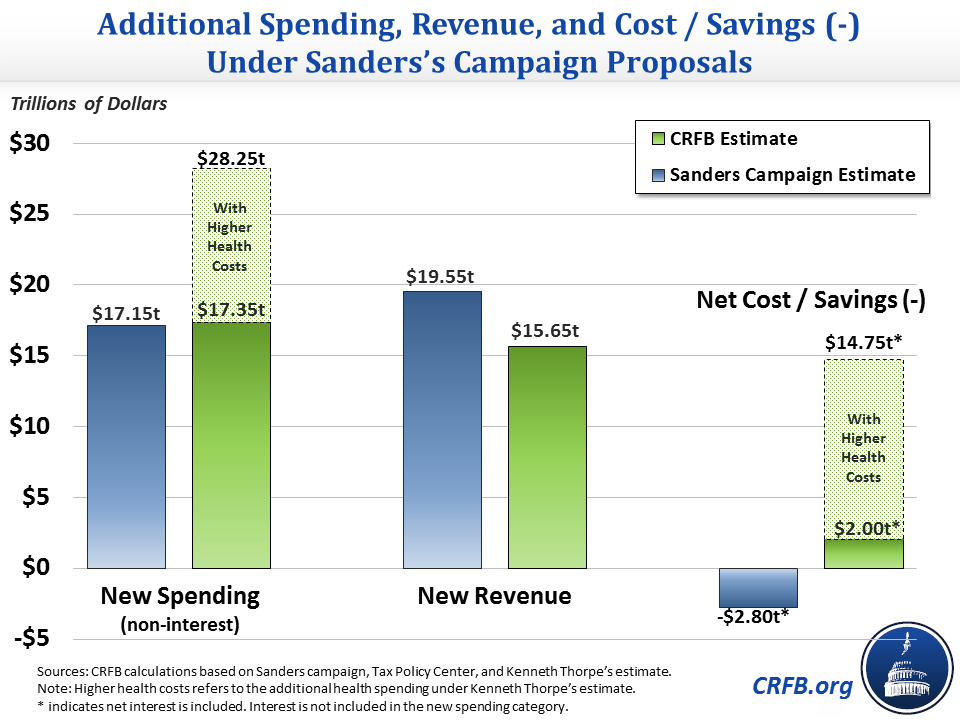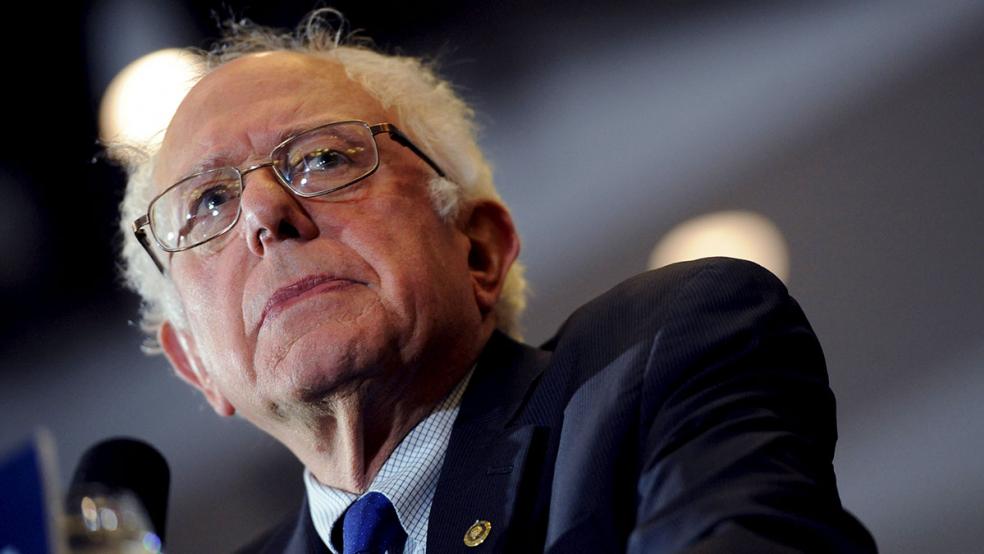Not since Democrat Lyndon B. Johnson has any candidate for president wanted to do as much to expand the size and scope of the federal government as Sen. Bernie Sanders of Vermont, the democratic socialist who has high ambitions to beat out former Secretary of State Hillary Clinton for the Democratic presidential nomination this summer.
Johnson poured hundreds of billions of dollars into his “Great Society”– including the creation of Medicare and Medicaid – and Sanders’s revolutionary government and social welfare agenda could easily match or exceed that spending.
Related: Sanders’ Tax Plan Soaks Everybody, With the Wealthiest Paying Millions More
If Sanders had his way, the government would provide free college tuition to all students at state-run colleges and universities. Americans would be entitled to medical and family leave from work, courtesy of the federal government. Rather than trimming benefits of the Social Security system, as fiscal conservatives say would sustain the retirement program, Sanders would engineer an historic expansion of the program for retirees and the disabled.
That’s just for starters. Sanders’ most ambitious and costly proposal would enact a European-style single-payer national health insurance program to guarantee every American health care coverage. He would launch a major new infrastructure program to repair and replace the nation’s aging highways, bridges, airports and water projects. And he would provide universal childcare and pre-school programs.
To his credit, Sanders’s has proposed a series of massive income and payroll tax increases to help offset the cost of his ambitious program. That’s assuming, of course, that he could push trillions of dollars in tax hikes past congressional Republicans who wouldn’t even go along with a five-cent increase in the federal gasoline tax last year to help repair crumbling highways.
A recent analysis of Sanders’ tax proposals by the joint Tax Policy Center of the Urban Institute and Brookings Institution, concluded that Sanders plan would raise $15.3 trillion over the coming decade. The Vermont senator who is campaigning largely on the issues of income inequality and the corruption and excesses of Wall Street, would spread the pain of higher taxes across the board, but with the wealthiest 0.1 percent of Americans being hit with an average increase of more than $3 million in 2017.
Related: Clinton’s Tax Hikes on the Rich Could Raise $1.1 Trillion Over 10 Years
Based on his campaign’s own estimates, Sanders would increase government spending other than for interest on the debt by 38 percent over the next decade, according to a new analysis released Thursday by the non-partisan Committee for a Responsible Federal Budget (CRFB). But rather than fully offsetting his spending with tax increases, as Sanders has pledged to do, the offsets “would fall significantly short of the costs.” Bottom line: the plan would add between $2 trillion and $15 trillion to an already unsustainable $19.2 trillion national debt.

Based on the budget watchdog’s estimates, Sanders’ proposal would boost spending and tax revenue to “far beyond any previous levels in the United States over the last half century.” As a point of reference, the United States has spent an average of about 20 percent of Gross Domestic Product over the past 50 years dating back to the Johnson administration, and never more than 24.4 percent.
By contrast, spending under a President Sanders, spending would average between 30 and 35 percent of the total economy, depending on whether healthcare costs and interest on the debt rise or fall.
In actual dollar terms, Sanders’s most important initiatives would cost between $17 and $28 trillion, depending on healthcare cost variables, while his tax increases would raise less than $16 trillion. While Sanders’ numbers crunchers optimistically predict that their fiscal program would actually reduce the debt by $2.8 trillion in the coming decade relative to current spending policies, CRFB challenged many of the candidates’ assumption. If they are right, then Sanders’s proposals would cause the national debt to rise from 74 percent of GDP in 2015 to as much as 139 percent of GDP by 2026.
Related: Trump’s Tax Cuts Would Add $24.5 Trillion to the Debt
The CRFB has taken similar tough looks at other presidential candidates’ tax and spending proposals, including a recent one showing that Republican Sen. Ted Cruz of Texas would add $12.5 trillion to the national debt by 2016 with his military spending and tax reform ideas.
Sanders and his advisers have generally discounted criticism of his programs – especially his national health care plan that carries a net cost of $19.5 trillion over the coming decade – as political jousting. Clinton has frequently criticized him for making pie in the sky promises that he could never deliver on in the real political world. She and others have complained that his “numbers don’t add up.”
“We applaud Senator Sanders’ efforts to pay for his ambitious policy proposals through serious and specific tax increases,” the CRFB report concluded. “However, based on our estimates, these offsets will fall short of paying the full cost of Senator Sanders’s proposals, and they certainly fall short of putting the debt on a sustainable path.”
“This is particularly troubling given that the magnitude of Senator Sanders’ tax increases leave few options available to further tackle the debt,” the report added.





